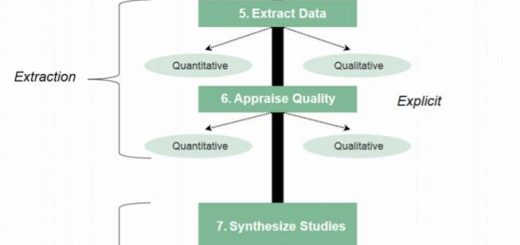Membuat Paragraf

A strong paragraph contains three distinct components:
- Topic sentence. The topic sentence is the main idea of the paragraph.
- Body. The body is composed of the supporting sentences that develop the main point.
- Conclusion. The conclusion is the final sentence that summarizes the main point.
1. Topic Sentence
Five characteristics define a good topic sentence:
- A good topic sentence provides an accurate indication of what will follow in the rest of the paragraph.
Weak example. People rarely give firefighters the credit they deserve for such a physically and emotionally demanding job. (The paragraph is about a specific incident that involved firefighters; therefore, this topic sentence is too general.)
Stronger example. During the October riots, Unit 3B went beyond the call of duty. (This topic sentence is more specific and indicates that the paragraph will contain information about a particular incident involving Unit 3B.)
- A good topic sentence contains both a topic and a controlling idea or opinion.
Weak example. In this paper, I am going to discuss the rising suicide rate among young professionals. (This topic sentence provides a main idea, but it does not present a controlling idea, or thesis.)
Stronger example. The rising suicide rate among young professionals is a cause for immediate concern. (This topic sentence presents the writer’s opinion on the subject of rising suicide rates among young professionals.)
- A good topic sentence is clear and easy to follow.
Weak example. In general, writing an essay, thesis, or other academic or nonacademic document is considerably easier and of much higher quality if you first construct an outline, of which there are many different types. (This topic sentence includes a main idea and a controlling thesis, but both are buried beneath the confusing sentence structure and unnecessary vocabulary. These obstacles make it difficult for the reader to follow.)
Stronger example. Most forms of writing can be improved by first creating an outline. (This topic sentence cuts out unnecessary verbiage and simplifies the previous statement, making it easier for the reader to follow.)
- A good topic sentence does not include supporting details.
Weak example. Salaries should be capped in baseball for many reasons, most importantly so we don’t allow the same team to win year after year. (This topic sentence includes a supporting detail that should be included later in the paragraph to back up the main point.)
Stronger example. Introducing a salary cap would improve the game of baseball for many reasons. (This topic sentence omits the additional supporting detail so that it can be expanded upon later in the paragraph.)
- A good topic sentence engages the reader by using interesting vocabulary.
Weak example. The military deserves better equipment. (This topic sentence includes a main idea and a controlling thesis, but the language is bland and unexciting.)
Stronger example. The appalling lack of resources provided to the military is outrageous and requires our immediate attention. (This topic sentence reiterates the same idea and controlling thesis, but adjectives such as appalling and immediate better engage the reader. These words also indicate the writer’s tone.)
- Most academic essays contain the topic sentence at the beginning of the first paragraph.
- The supporting sentences can be placed before the topic sentence and the concluding sentence is the same as the topic sentence. This technique is frequently used in persuasive writing.
- Placing a topic sentence in the middle of a paragraph is often used in creative writing.
- Some well-organized paragraphs do not contain a topic sentence at all. Instead of being directly stated, the main idea is implied in the content of the paragraph. This technique is often used in descriptive or narrative writing. Implied topic sentences work well if the writer has a firm idea of what he or she intends to say in the paragraph and sticks to it.
2. Supporting Sentence
Most paragraphs contain three to six supporting sentences depending on the audience and purpose for writing. A supporting sentence usually offers one of the following:
-
Reason
Sentence: The refusal of the baby boom generation to retire is contributing to the current lack of available jobs.
-
Fact
Sentence: Many families now rely on older relatives to support them financially.
-
Statistic
Sentence: Nearly 10 percent of adults are currently unemployed in the United States.
-
Quotation
Sentence: “We will not allow this situation to continue,” stated Senator Johns.
-
Example
Sentence: Last year, Bill was asked to retire at the age of fifty-five.
3. Concluding Sentence
An effective concluding sentence draws together all the ideas you have raised in your paragraph. It reminds readers of the main point—the topic sentence—without restating it in exactly the same words. Using the hamburger example, the top bun (the topic sentence) and the bottom bun (the concluding sentence) are very similar. They frame the “meat” or body of the paragraph.
- Restate the main idea.
Example: Childhood obesity is a growing problem in the United States.
- Summarize the key points in the paragraph.
Example: A lack of healthy choices, poor parenting, and an addiction to video games are among the many factors contributing to childhood obesity.
- Draw a conclusion based on the information in the paragraph.
Example: These statistics indicate that unless we take action, childhood obesity rates will continue to rise.
- Make a prediction, suggestion, or recommendation about the information in the paragraph.
Example: Based on this research, more than 60 percent of children in the United States will be morbidly obese by the year 2030 unless we take evasive action.
- Offer an additional observation about the controlling idea.
Example: Childhood obesity is an entirely preventable tragedy.

What to include in concluding sentence
- Your conclusion wraps up your essay in a tidy package and brings it home for your reader
- Your topic sentence should summarize what you said in your thesis statement
- This suggests to your reader that you have accomplished what you set out to accomplish
- Do not simply restate your thesis statement, as that would be redundant
- Rephrase the thesis statement with fresh and deeper understanding
- Your conclusion is no place to bring up new ideas
- Your supporting sentences should summarize what you have already said in the body of your essay
- If a brilliant idea tries to sneak into the final paragraph, you must pluck it out and let it have its own paragraph in the body, or leave it out completely
- Your topic for each body paragraph should be summarized in the conclusion
- Wrap up the main points
- Your closing sentence should help the reader feel a sense of closure
- Your closing sentence is your last word on the subject; it is your “clincher”
- Demonstrate the importance of your ideas
- Propel your reader to a new view of the subject
- End on a positive note
- Your closing sentence should make your readers glad they read your paper
https://www.time4writing.com/writing-resources/writing-a-good-conclusion-paragraph/



1 Response
[…] Membuat ParagrafParagraf yang baik20 Contoh Kalimat Utama dan Penjelas dalam Paragraf Bahasa […]